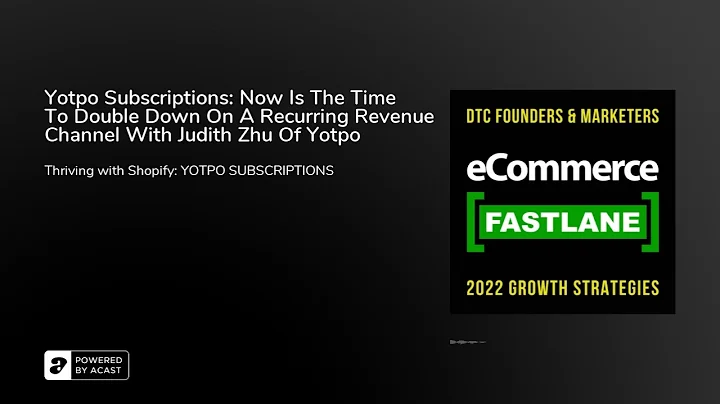Maximize Your Cash Value: Exploring Infinite Banking Options
Table of Contents
- Introduction
- Understanding Your Options for Accessing Policy Cash Value
- Policy Loans
- Withdrawals
- Third-Party Loans
- Comparing Pros and Cons of Different Options
- Interest Rates
- Repayment Terms
- Control over Capital
- Making Informed Decisions
- Conclusion
Understanding Your Options for Accessing Policy Cash Value
Managing your policy cash value effectively is crucial when it comes to utilizing your whole life insurance policy for infinite banking. Many policyholders may not be aware of the various options available to access their cash value. In this article, we will delve into the different methods you can employ to access your policy cash value and explore the pros and cons of each option.
Policy Loans
One primary option for accessing your policy cash value is through policy loans. When you take a policy loan, you borrow money from your insurance company's general fund, with your cash value and death benefit serving as collateral. The borrowed amount incurs interest, which you repay to the insurance company. As you make loan payments, the lien against your policy values reduces, freeing up your cash value and death benefit for further use. This option provides you with control over the repayment terms, allowing you to choose a repayment schedule that suits your needs.
Withdrawals
Another option for accessing your cash value is through withdrawals. With this method, you take out a portion or the entirety of your policy values. If the withdrawal is less than what you've paid in premiums (your cost basis), it is tax-free. However, if you withdraw more than your cost basis, you will need to pay taxes on the growth portion. Withdrawals provide you with immediate access to your cash value without the need for a loan, making it a straightforward option.
Third-Party Loans
A lesser-known option is taking a loan from a third-party lender. In this case, you approach a different company other than your insurance provider and use your policy's cash value as collateral. This type of loan can be secured against the cash value in your policy, allowing you to access additional capital. However, compared to policy loans, third-party loans often have different interest rates and repayment terms. It's crucial to weigh the advantages and disadvantages of utilizing a third-party loan before making a decision.
Comparing Pros and Cons of Different Options
When considering your options for accessing policy cash value, it's essential to evaluate the pros and cons of each method. By doing so, you can make an informed decision based on your unique circumstances and financial goals.
Interest Rates
Interest rates play a significant role in choosing the right option for accessing your cash value. Policy loans offered by insurance companies typically have set interest rates, which can range from 4.75% to 8%. These rates may be capped to ensure competitiveness in the market. On the other hand, third-party loans may offer lower interest rates, potentially making them more attractive. However, it's crucial to consider how the interest is calculated and applied when comparing different loan options.
Repayment Terms
Repayment terms are an essential factor to consider when choosing an option to access your policy cash value. Policy loans often provide the flexibility of unstructured payments, where you can pay back the loan at your convenience. You can choose to pay it off over a shorter period or even amortize it over several years. With third-party loans, repayment terms may be more structured, requiring regular payments, including both principal and interest. It's crucial to assess your financial situation and determine which repayment terms align with your objectives.
Control over Capital
The level of control you have over your cash value is another crucial aspect to consider. With policy loans, you maintain control over the repayment process. The amount collateralized is specific to the loan, so you can access the remaining cash value if needed. In contrast, third-party loans may require you to assign your entire cash value as collateral, limiting your ability to access any additional funds until the loan is repaid. To maintain control, it's important to understand the terms and conditions of each loan option.
Making Informed Decisions
Choosing the most suitable option for accessing your policy cash value depends on your specific financial situation and goals. It's essential to assess the advantages and disadvantages of each option and consider factors such as interest rates, repayment terms, and control over capital. By understanding the nuances of each method, you can make informed decisions that align with your financial objectives. Remember, the key to successful infinite banking lies in maximizing control over your cash value and using it strategically to accelerate your wealth-building journey.
Conclusion
Accessing your policy cash value can provide you with a valuable source of capital for various financial needs. Understanding the options available to you, such as policy loans, withdrawals, and third-party loans, empowers you to leverage your whole life insurance policy effectively. By carefully evaluating the pros and cons of each option, including factors like interest rates, repayment terms, and control over capital, you can make informed decisions that support your financial goals. Take the time to review your unique circumstances and consult with professionals to create a strategy that optimizes your use of policy cash value for long-term financial success.






















